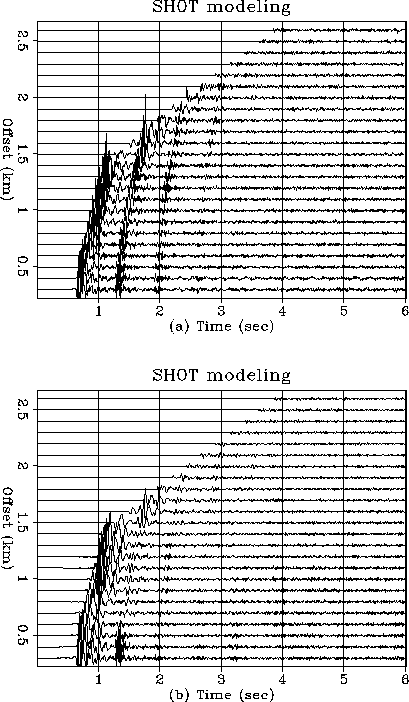 |
Figure 7 (a) is the Geco common shot gather after wavelet compression and muting to remove direct and head waves; (b) is the water-related reverberations attenuated section.
Field data comes from a Barents Sea common shot dataset donated to SEP by Geco. The water bottom is deep, flat, and hard. The near offset is 294m, the hydrophone interval 50m. There are 48 traces per shot. The hard waterbottom multiple reflections are so strong that they dominate the whole section. The water bottom primary reflection begins at 600msec. There are two strong primaries: one at 1.5 seconds; the other at 4 seconds. Both have pegleg multiple trains associated with them. We use the wavelet deconned result of another of our papers in this report (Mo, 1992) as input. The input and result are shown in Figure 7. The multiples and peglegs are attenuated in this processing. In all the processings for this dataset, we use the same processing parameters as in processing the above synthetic data. This dataset was processed before by Morley (1982).
 |